Art & Exhibitions
Handicrafts Carry the Day at the 2014 Whitney Biennial
Handmade objects and installations are conspicuously numerous at this year's Whitney Biennial.
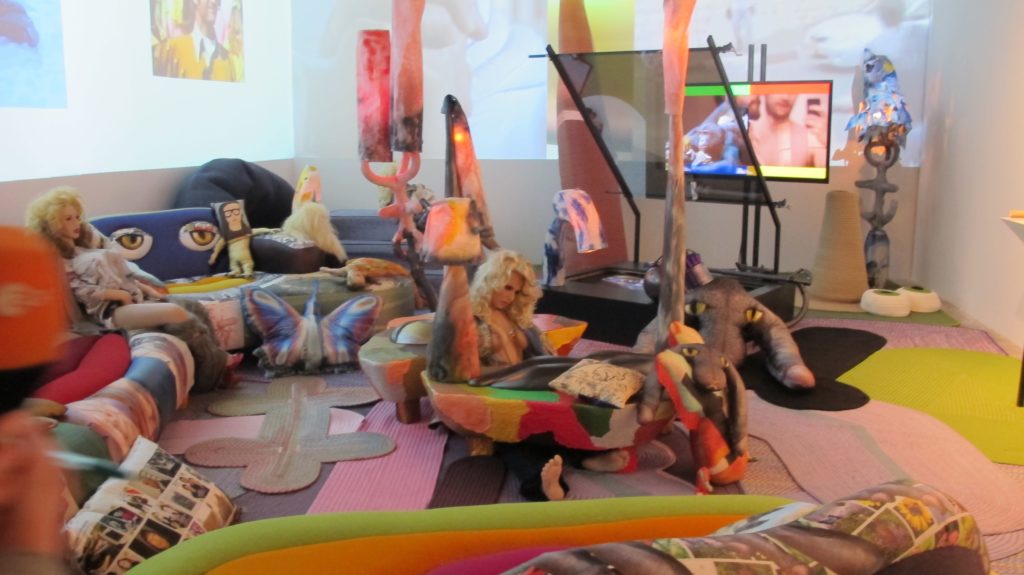
Handmade objects and installations are conspicuously numerous at this year's Whitney Biennial.

Rozalia Jovanovic

The Whitney Biennial may have been divided according to the inclinations of its three curators this year—Michelle Grabner selected artists for the fourth floor, Stuart Comer reigned over the third floor, and Anthony Elms took to the second floor, with a smattering of curating by all three happening throughout other galleries and spaces in building (even the elevator has a catchy video)—but on every floor there were hints of handicrafts from enormous samples of misshapen glazed pottery (see Sterling Ruby) to cords of eye-poppingly colorful natural fibers suspended from the ceiling (see Sheila Hicks). Much of the homey feel of these objects gave way to an underlying transgression; many spoke to the idea of place, and some engaged meaningfully with the architecture of the Marcel Breuer-designed building, which resonated with the fact that this is the Whitney’s last Biennial in its current location. Here’s a sampling of what we saw during Tuesday’s preview.
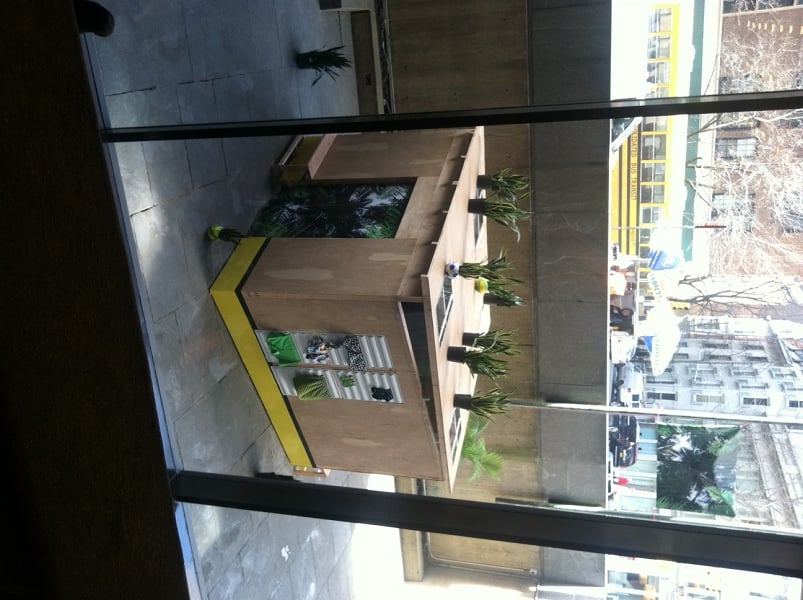
In his opening remarks at the preview, Comer addressed the work of Radames Figueroa—a shabby shanty on the lower lobby floor—noting how it was very important to him to include in the Biennial an artist from Puerto Rico, being that it occupies a hybrid place between the United States and Latin America. “His use of handmade, readymade materials to make these provisional structures,” said Comer, “is a very interesting question in relation to the history of Brutalist architecture, and the Breuer building itself, particularly as the Whitney is in a very transitional moment and about to leave this building to go downtown.”

Japanese artist Ei Arakawa was seated on the third floor near an installation of three large wearable hats, Hawaiian Presence, composed of wire, fabric, straw, and plastic, each in the shape of an island—Kauai, Hawaii, and Manhattan—and each hat wearable by several people simultaneously. “I wanted to have a Hawaiian presence in the show,” said Arakawa about the tropical-looking headpieces, which were fabricated by Ellen Christine Couture. “When people wear this, the space is activated by the wearing, and the island becomes more alive in the space.” The hats are meant to inspire impromptu performances. “You want to wear this,” said Ei, calling out to two visitors as he jumped up from his chair. He lifted Hawaiian Presence (Hawaii) off the hat rack, approached them, and the two of them, along with Ei, put it on.

Sheila Hicks, Pillar of Inquiry/Supple Column (2013–14).
Photo: Rozalia Jovanovic.
Artist Sheila Hicks‘s Pillar of Inquiry/Supple Column (2013–14), an acrylic, linen, cotton, and bamboo work on the fourth floor, is one of the largest of Hicks’s textile works, or what she calls “Supple Works,” which she’s been creating since the 1950s. Unfurling in thick cords from the gallery’s unique coffered ceilings, this one was designed specifically with the architecture of the space in mind.

Wearing handcrafted masks, and standing on a triangular stage, the three players in My Barbarian (Malik Gaines, Jade Gordon, and Alexandro Segade) gave a spirited performance of their adaptation of modernist playwright Bertolt Brecht’s play The Mother. How does the theater troupe fit within a fine art context? “They make drawings and masks, and I would say the stage is a sculpture too,” explained Elms, who was responsible for bringing them on. “So there is a way in which they’re rooted in the visual art world.”
Elms also liked the loose subject they proposed for the biennial. “We always talk about forefathers,” he added, “and they were going to address motherhood.” On the second floor, you can see a film showing the players interacting with their own mothers as well as people they consider their “artistic mothers.”
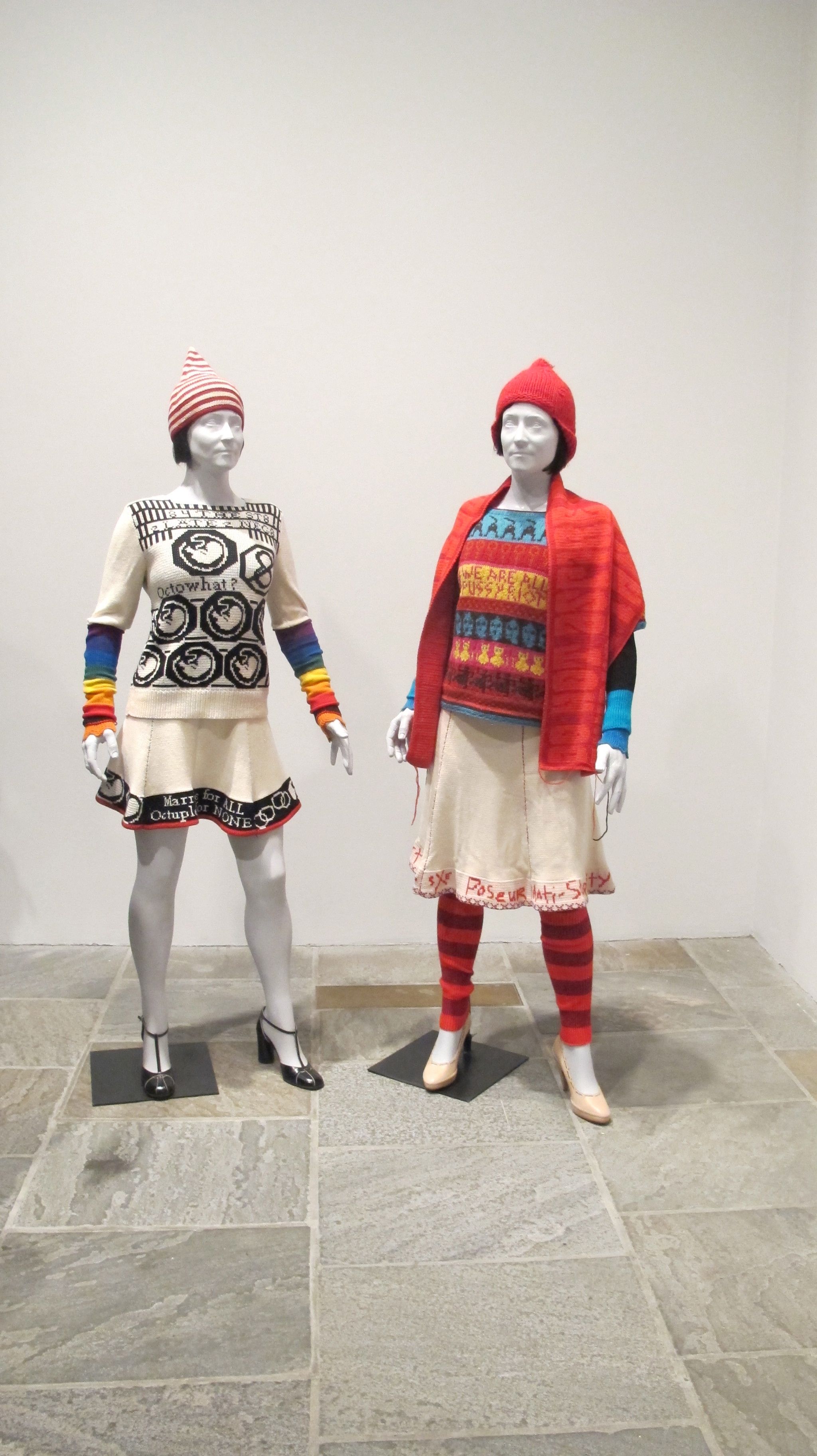
Los Angeles-based artist Lisa Anne Auerbach‘s knitted wool sweater sets and wall work Let the Dream Write Itself (embroidered with quotes from psychics she had visited) were among the more visually alluring works on the third floor.

Several large ceramic vessels from LA-based artist Sterling Ruby’s Basin Theology series graced the fourth floor with their glazed and irregular proportions. These colorful basins, inspired by European “Fat Lava” pottery of the 1950s, ’60s, and ’70s, contain remnants of prior works he considered failures.
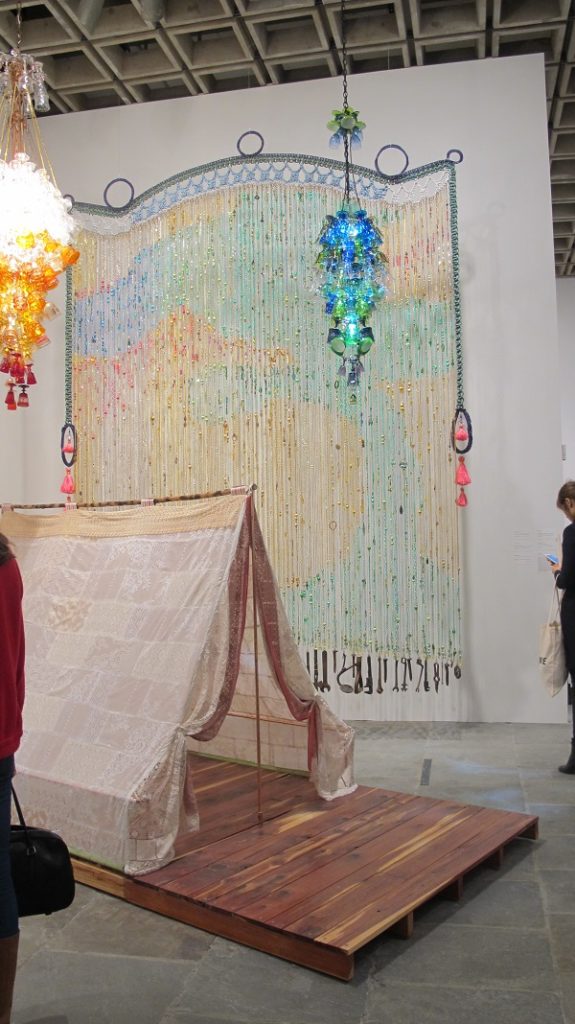
Part of Joel Otterson’s installation.
Photo: Rozalia Jovanovic.
The domestic American abode has long been an inspiration for Joel Otterson, whose work in sculpture and the decorative arts has for thirty years taken cues from high, low, and queer culture. Here, the curtain, quilt, and tent, exhibit his particular predilection for handicrafts and thrift store finds.
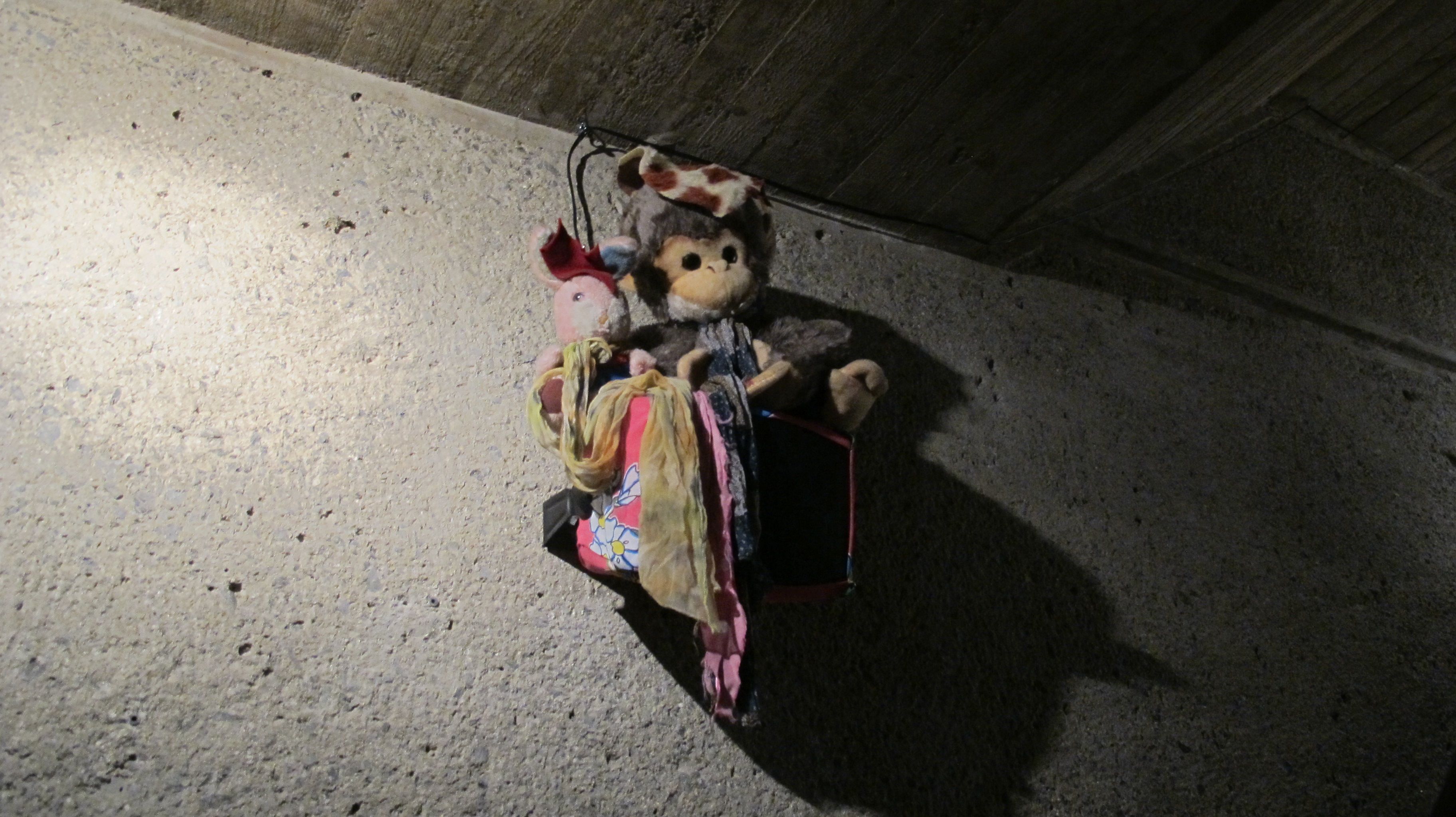
The clusters of stuffed animals you’ll see in the stairwell are the work of Brussels-based composer and performance artist Charlemagne Palestine (a contemporary of Phillip Glass and Steve Reich), who will surround himself with stuffed animals when performing his music and smoking clove cigarettes. In this instance, placed over speakers that emit eerie sounds, they add a cozy-yet-spooky touch to the otherwise austere Brutalist design of the Whitney’s stairwell.
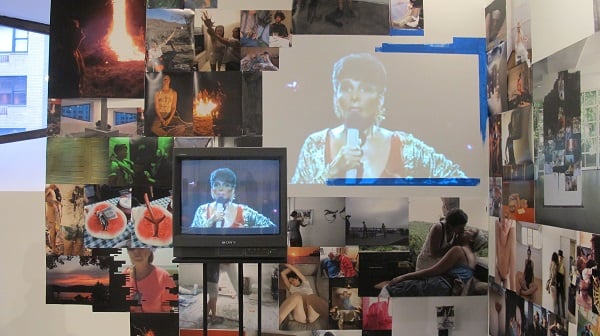
Even A.L. Steiner‘s Cost-Benefit Analysis (2014)—a collage composed of pigmented inkjet prints, photocopies, and paint that documents the events in the lives of individuals involved in social, environmental, and political activism—looked more like the wall of an angsty teenager’s room than that of a museum, and to very good effect.

Uri Aran‘s Untitled (2014), a mixed media on formica and paper piece that included baked cookies, cut-up rubber gloves, and a plate of glass, evoked the homemade and suggested an unfolding story. Behind the sculpture was the New York-based artist’s six-minute video A to Q, which features a selection of prosaic objects representing letters of the alphabet.
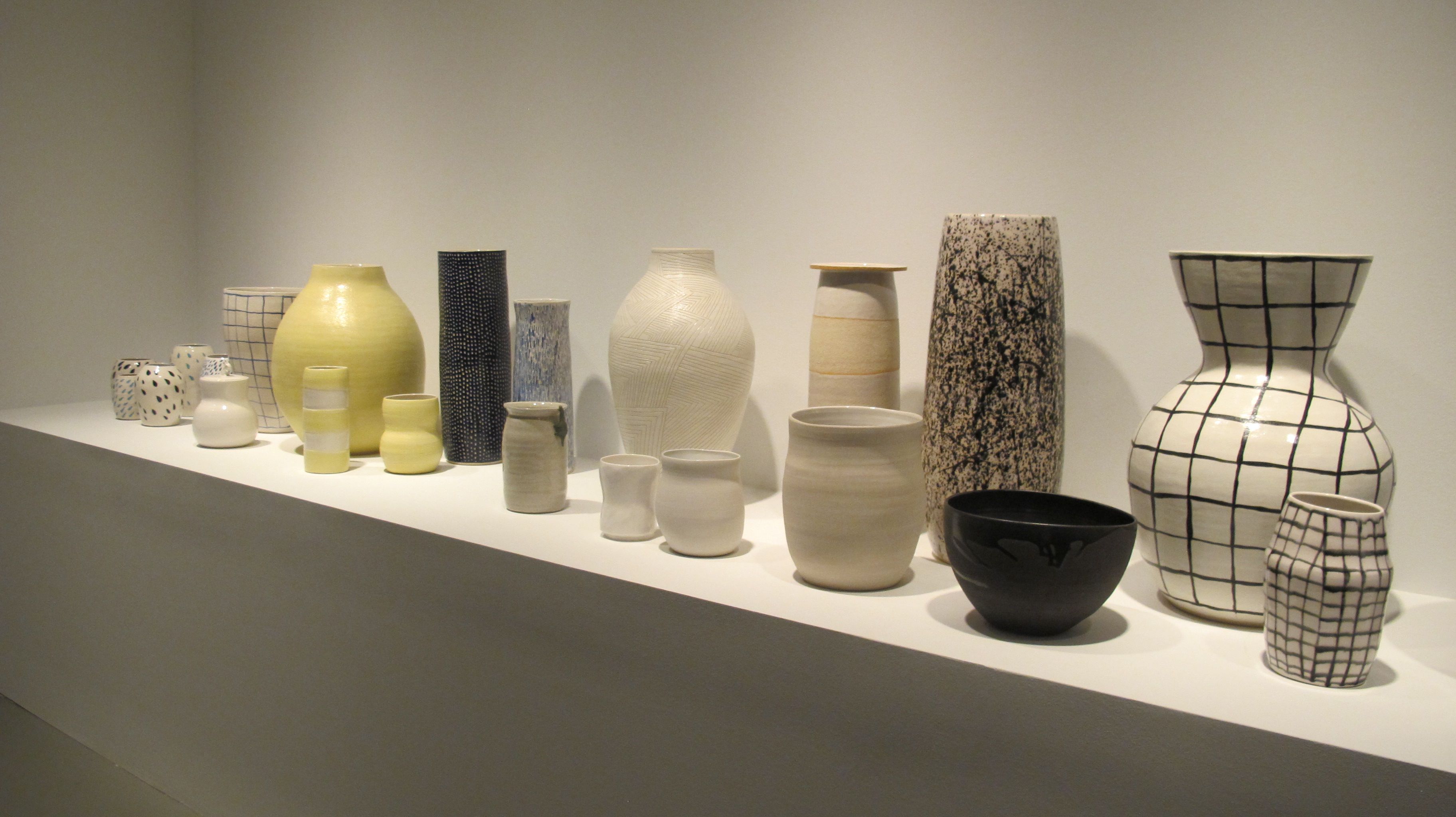
LA-based artist Shio Kusaka took to the traditions of pottery for her Biennial installation on the fourth floor, in which each bowl and vase contains unique patterns and imperfections, rich colors, and playful images of dinosaurs that make these sculptures more than just your average porcelain pots.
Bjarne Melgaard‘s dystopian third floor installation, meant to evoke the notion of the Anthropocene—the geological period that bears the mark of human activities—was a frenetic assemblage of graphic and violent images imprinted on couches and seen on video screens. It included life-sized female sex dolls strewn over couches alongside disembodied genitalia, and piled-up crocheted rugs. Due to his penchant for unique, crafted materials like couches and rugs, Melgaard’s homage to civilization’s decline, however transgressive, had a decidedly home-grown feel.
The 2014 Whitney Biennial continues through May 25.